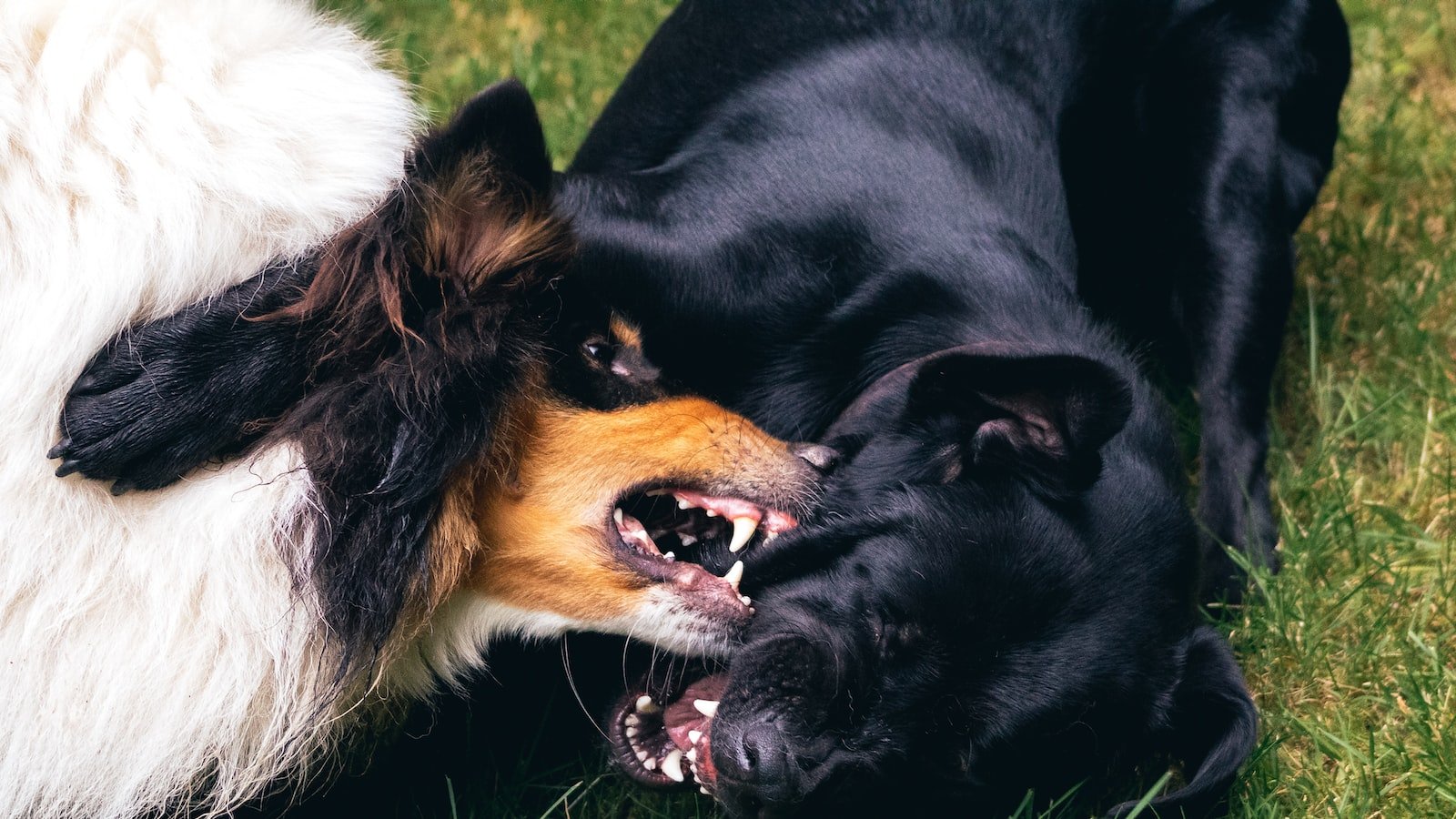Every morning as the sun peeks through the curtains, a cloud of unease hangs heavy in the air. Your loyal companion, a furry bundle of joy, trembles with anxiety as you prepare to leave for work. The haunting melodies of whimpers and howls fill the room, echoing the heart-wrenching separation anxiety that plagues your beloved dog. But fear not, for within this article lie a treasure trove of dog training tips that shall unlock the gates to a calmer, more relaxed existence for both you and your four-legged friend. So, bid farewell to teary-eyed farewells and endless chewed-up furniture, and embark on a journey of discovering effective techniques to alleviate your dog’s separation anxiety.
Table of Contents
- Understanding Separation Anxiety in Dogs
- Identifying the Signs and Symptoms of Separation Anxiety
- Effective Strategies to Ease Separation Anxiety in Dogs
- Creating a Supportive Environment for Dogs with Separation Anxiety
- Q&A
- Future Outlook

Understanding Separation Anxiety in Dogs
Separation anxiety in dogs is a common behavioral issue that can cause distress for both dogs and their owners. Understanding this condition is essential in order to help dogs overcome their anxiety and lead happier, more balanced lives.
Recognizing the Signs
If your dog becomes extremely anxious or exhibits undesirable behaviors when left alone, they may be experiencing separation anxiety. Some common signs include:
- Excessive barking, howling, or whining
- Destructive chewing or scratching
- Pacing or restlessness
- Attempting to escape from their confinement
- Indoor accidents, despite being house-trained
Causes of Separation Anxiety
Separation anxiety can have various causes, including:
- Lack of socialization: Dogs that haven’t been properly socialized may struggle with being alone.
- Change in routine: Dogs are creatures of habit, and a sudden change in their daily routine can trigger anxiety.
- Past traumatic experiences: Dogs who have experienced traumatic events in their past may develop separation anxiety as a result.
- Sensitive temperament: Some dogs are naturally more prone to anxiety and may require extra support.
It’s important to note that separation anxiety is not a reflection of a dog’s love or attachment to their owner. It is a psychological condition that can be managed and improved with the right approach.

Identifying the Signs and Symptoms of Separation Anxiety
Understanding the signs and symptoms of separation anxiety in both children and adults is crucial in providing support and finding effective coping strategies. While this condition can manifest differently in each individual, there are common indicators to look out for.
Here are some key signs to help identify separation anxiety:
- Excessive distress: Individuals with separation anxiety often experience intense distress when faced with separation from a loved one or a familiar environment. This distress can manifest through crying, tantrums, or attempts to physically prevent separation.
- Constant worry: An individual with separation anxiety may display persistent worry or fear about being apart from their attachment figure. This worry may be accompanied by thoughts of harm coming to themselves or their loved ones.
- Physical symptoms: Body reactions are common signs of separation anxiety. This may include headaches, stomachaches, rapid heartbeat, trembling, or difficulty breathing.
It’s essential to note that separation anxiety may affect individuals of all ages, not just children. Adults can also experience this condition, often resulting in challenges in personal relationships or work-related difficulties.
Identifying these signs and symptoms is the first step towards seeking professional help and developing strategies to address separation anxiety effectively.

Effective Strategies to Ease Separation Anxiety in Dogs
Separation anxiety is a common issue that many dogs experience when their owners leave them alone. It can manifest in various ways, such as excessive barking, destructive behavior, or bathroom accidents. Luckily, there are several effective strategies you can employ to help ease your furry friend’s separation anxiety:
- Gradual Departures: Start by leaving your dog alone for short periods and gradually increase the duration. This will help them get accustomed to being alone and reduce their anxiety over time.
- Desensitization: Create a positive association with your departure cues by practicing them frequently without actually leaving. This can include picking up your keys or putting on your coat. Eventually, your dog will learn that these cues don’t always mean you’re leaving them alone.
- Interactive Toys: Provide your dog with engaging toys and puzzle feeders filled with treats or their favorite food. This will keep them mentally stimulated and distracted while you’re away.
- Calming Music or White Noise: Playing soothing music or white noise in the background can help drown out external noises that may trigger your dog’s anxiety. There are even specially designed playlists available that are specifically created to calm dogs.
- Establish a Routine: Dogs thrive on predictability, so establishing a consistent daily routine can help reduce their anxiety. Set specific times for meals, walks, and playtime, as this will provide them with a sense of security and stability.
Remember, every dog is unique, so it may take time to find the strategies that work best for your furry companion. Patience, consistency, and positive reinforcement are key when helping your dog overcome separation anxiety. With time, dedication, and love, you can make a significant difference in your dog’s well-being and happiness when they are home alone.
Creating a Supportive Environment for Dogs with Separation Anxiety
Dogs are known for their loyalty and companionship, but some pups may experience separation anxiety when left alone. This condition can be distressing for both the dog and their owner. However, there are several effective measures you can take to create a supportive environment that helps alleviate separation anxiety in your furry friend.
First and foremost, establish a predictable routine for your dog. Dogs thrive on consistency, so having a structured schedule can bring them a sense of security. Aim to feed them, exercise them, and take them outdoors for bathroom breaks at the same times every day. This routine will provide your pup with a predictable pattern, reducing anxiety when you eventually have to leave them alone.
Additionally, create a designated safe space for your dog. This can be a comfortable corner where they can retreat to when they feel anxious or overwhelmed. You can enhance this space by using calming scents, such as lavender, or playing soft classical music to create a soothing atmosphere. Place familiar toys or a blanket with your scent nearby to provide a sense of familiarity and comfort.
- Engage in regular training sessions with your pup to strengthen their confidence and independence.
- Consider using puzzle toys or treat-dispensing toys to keep your dog occupied and mentally stimulated during your absence.
- Gradually increase the duration of separation to help desensitize your dog, starting with short periods and gradually extending the time.
- Seek professional help if your dog’s separation anxiety persists, as a trained behaviorist or veterinarian can provide specialized guidance.
Remember, requires patience and understanding. By implementing these strategies and showering your furry friend with love and reassurance, you can help them feel more secure and confident when left alone.
Q&A
Why do dogs experience separation anxiety?
Dogs may experience separation anxiety due to being overly attached to their owners or a lack of proper socialization. It can also occur if they’ve gone through a traumatic event in the past.
What are some signs of separation anxiety in dogs?
Common signs include excessive barking, destructive behavior, soiling in the house, pacing, and attempts to escape. Dogs with separation anxiety may also display hypersalivation and noticeable distress when their owners prepare to leave.
How can I help my dog overcome separation anxiety?
Gradually desensitizing your dog to being alone by starting with short periods of separation and gradually increasing the time can be helpful. Providing them with interactive toys and creating a calm environment can also assist in reducing their anxiety.
Are there any training techniques that can be used to alleviate separation anxiety?
Positive reinforcement-based techniques, such as giving your dog a special treat or toy when you leave and returning without making a big fuss, can help alleviate separation anxiety. Implementing a consistent routine and using calming aids, like soothing music, may also be beneficial.
Can medication be used to treat separation anxiety in dogs?
In severe cases, medication prescribed by a vet may be necessary to alleviate separation anxiety. Medication should always be used in combination with behavior modification techniques and under the guidance of a professional.
Is it possible for dogs to outgrow separation anxiety?
While some dogs may naturally outgrow separation anxiety as they mature, it’s not guaranteed. Seeking professional help and implementing appropriate training techniques can increase the chances of managing and reducing separation anxiety in dogs.
Future Outlook
As we come to the end of this dog training journey, we hope that these separation anxiety tips have shed a ray of hope for both you and your furry friend. Remember, the road to conquering separation anxiety may be filled with twists and turns, but it’s the small steps that make the biggest difference.
As you continue on this path, keep in mind that your patience and understanding are the guiding stars to your dog’s emotional well-being. Each pup is a unique universe of their own, with their own fears and insecurities, waiting to be reassured and comforted.
In the grand tapestry of dog training, separation anxiety is just another hurdle to overcome, and you, dear reader, possess the power to transform it into a mere memory. As you develop a routine, build trust, and foster a positive environment, remember that Rome wasn’t built in a day – nor will a confident, relaxed pup flourish overnight. It’s a journey, with ups and downs, but the reward of witnessing your beloved companion’s progress is absolutely worth it.
While this article provides a solid foundation to tackle separation anxiety, it barely scratches the surface of what you can accomplish. Be resourceful, seek reliable guidance, or even consult a professional dog trainer if it fits your needs. Remember, there’s a vast community of dog lovers out there, ready to share their experiences and lend a helping paw.
Finally, always cherish the moments and milestones achieved, no matter how small they may seem. Celebrate each triumph, for every little victory leads to a stronger bond and a happier, more balanced furry friend. With an open heart, unwavering dedication, and a sprinkle of creativity, you will unlock a world of possibilities and a lifetime of harmony with your four-legged companion.
Wagging tails, heartwarming cuddles, and newfound peace await you on the other side of separation anxiety. Step forward, brave souls, and embrace the transformative power of patience, love, and a touch of training magic. Remember, separation anxiety does not define your dog, but it’s your unwavering commitment that will shape the beautiful tale of their life.
As an affiliate, my content may feature links to products I personally use and recommend. By taking action, like subscribing or making a purchase, you’ll be supporting my work and fueling my taco cravings at the same time. Win-win, right?
Want to read more? Check out our Affiliate Disclosure page.